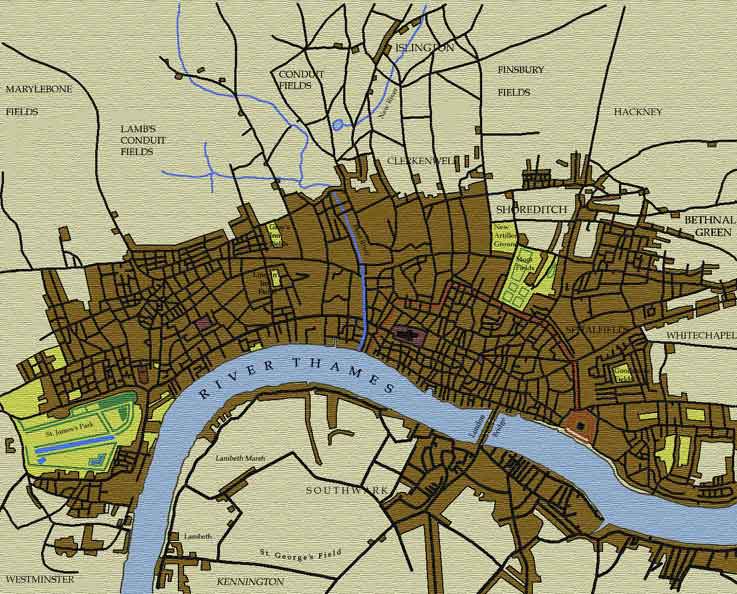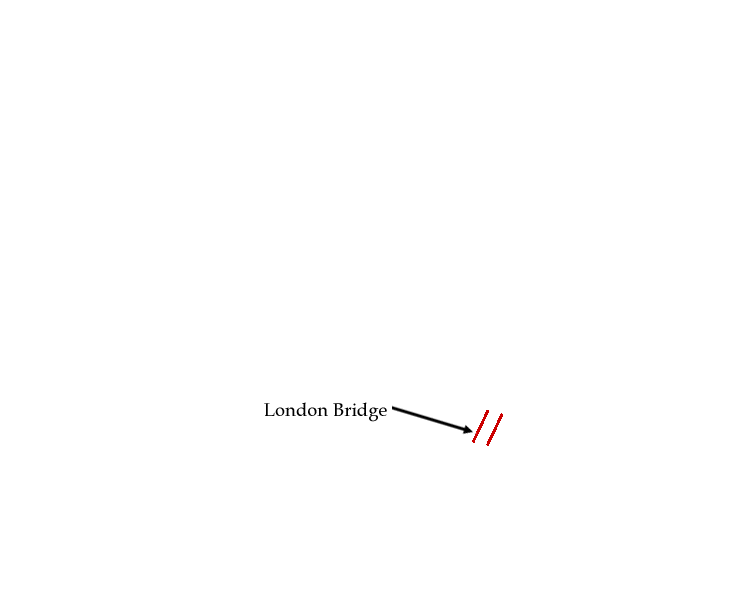


London ca. 1676
London Bridge
|
One of the more popular seventeenth- and eighteenth-century
tourist sites in London was London Bridge. Begun in 1176 and completed
in 1209, it was lined on both sides by tall houses, with shops on the
first floor; it replaced a wooden structure that had existed on more or
less the same spot, with repairs and alterations, for a thousand years. |
|
The bridge itself possessed 19 arches,
and a small drawbridge (to let shipping through) at the south end. In
practice, travelling by water under the bridge was terribly dangerous,
as the piers channelled the river into narrow rushing gushes of white
water that could easily overwhelm a small boat; drownings beneath the
bridge by unlucky watermen and their passengers were frequent. The power
of the onrushing river was, however, harnessed in more positive ways by
a waterwheel that lay beneath one of the arches. Despite the congestion on the bridge, all attempts to build a second bridge further upstream were frustrated for a great while by the influence of the City Corporation, which feared that a bridge into Westminster would cut into City profits, and by the thousands of watermen who made their living ferrying people across the river. Construction upon a second bridge across the Thames, Westminster Bridge, did not begin until 1739, and was not completed until 1750. London Bridge was itself repaired in 1757-59, at which time its shops were finally removed; this bridge lasted until 1832, when it was pulled down and replaced by a new one. |
 |
Website maintained by: Mark
McDayter
Website administrator: Mark McDayter
Last updated: April 25, 2002